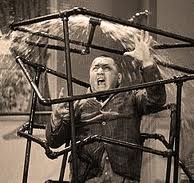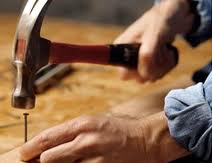Learn to Make Repairs
Never miss an opportunity to do your own repair work. To become an expert in the fix em up rent em out business, you must learn this. Think of it as part of your educational process. You lose two ways when you hire someone to do your work. First, you lose the chance of a free education, and second you lose the money that you would have saved by doing it yourself.
It may take you four hours to change an electrical receptacle or fix a toilet that won’t flush, something a professional could do in minutes. Don’t be concerned, in the long run you have learned a skill to be used for the rest of your life.
After going through my explanation about how everyone can learn to repair a house, a friend of mine insisted that it was impossible for him to do fix-up work; it just wasn’t in his genes. I replied that his way of thinking was his dogma. My karma told me that he could do it. In time, little by little, he did learn to make repairs and he came to enjoy it, even relish it.
My karma ran over his dogma.
Work with a Handyman
Having said the above, I also think that you should have a good handyman to back you up. Although there are many things that you can learn to do, you also have to know your limitations. There will be times when you can’t make a complicated repair. Someone with experience must be called in. For many things you can be the expert, but for some things you can’t. Ideally you should establish a good working relationship with a true handyman that you trust and is available to help you out as needed, particularly in the first few years of your business. To keep costs reasonable, always pay contractors or handymen by the job and not by the hour.
Your attitude should be that you want to learn how to do everything yourself. You don’t learn to ride a bike by watching someone else do it. The only way to learn is by doing it yourself, and the more you do it, the better you will be at it like my first grout repair project, and when learning to lay tile. Practice doing all the steps in the process until it becomes second nature for you.
Related Posts








